Apart from baseball bats, it is too much concerning about to fit a baseball glove for a child, because they have lots of palm sizes. Different palms need different gloves like bats. Mostly, gloves are needed to firm strong and keeping behind a hitter. So, a hitter, keeper and the bowler/pitcher need gloves. Hitters and keepers need gloves in both hands where the pitcher needs single gloves. Through the short article, we will inform you about the different sizes of gloves, privileges, pros, and cons. However, this would seem like a glove buying guide with lots of information. Let’s enjoy it!
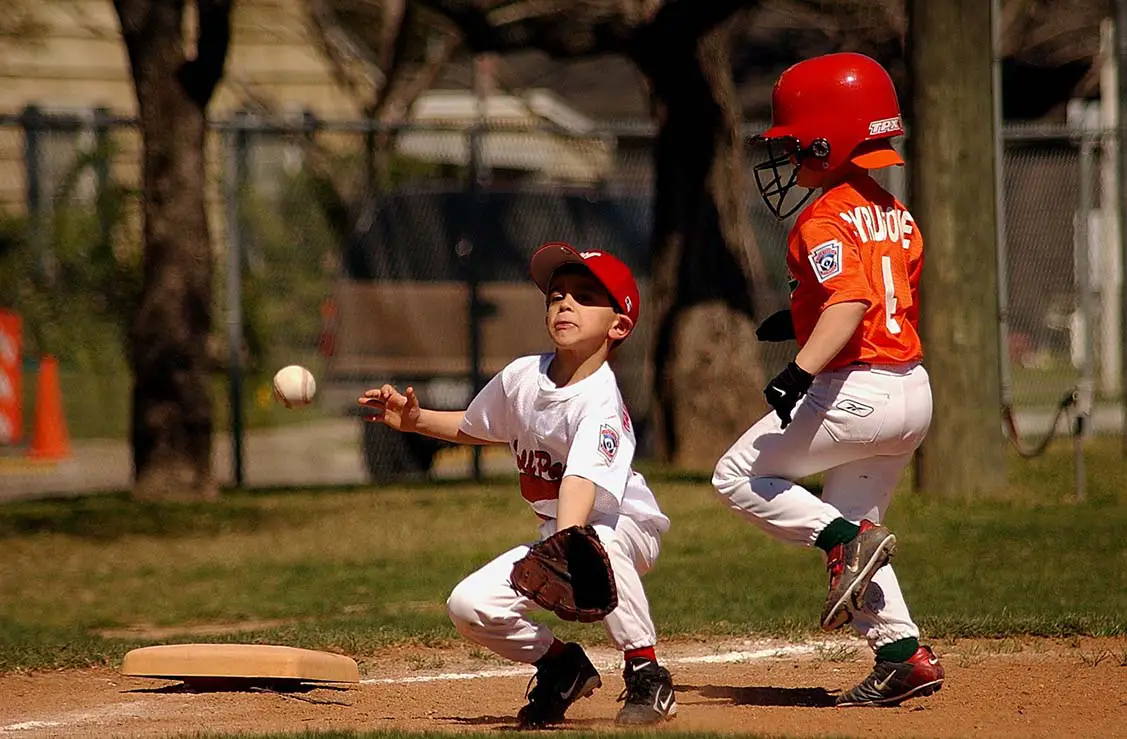
Content Inside
Guidelines to Fit a Baseball Glove for a Child
Before buying a baseball glove, you have to know the category of your child. He/she might be a pitcher or a hitter or keeper. Moreover, he/she probably right-handed or left-handed. These are the guidelines to purchase one.
Throwing Types of a Baseball Player
Watch carefully how your child throws- right hand or left hand. If he/she has good strength in throwing, surely he/she is a pitcher. If he/she catches the ball well or dives superb, definitely an outfield or keeping position is waiting for him/her. If the
Picking and throwing are faster, it is the basic training of infielder.
Right Handed Thrower (RHT)
RHT means Right Handed Thrower. In this case, a pitcher pitches a ball from his/her right arm. So he/she needs glove on the opposite left arm. Fastpitch bowlers are right-arm pitchers so far it is seen.
Left Handed Thrower (LHT)
LHT means Left Hand Thrower. Here, a pitcher throws a ball from his/her left arm and needs a single glove on the opposite right arm. Slowpitchers are left-arm throwers in most cases.
Pocket Size of a Baseball Glove
Palms are pockets so this is another provision to be concerned. Slowpitchers need a larger pocket size in their gloves. Fastpitchers and hitters need a smaller pocket size in their gloves. Besides, keepers and outfielders need wider pocket sizes. It is a vital issue for some leagues because a child has smaller palms, so the pocket size should be bigger for better picking.
Baseball Glove/Mitt Webbing
So far you know, webbing helps to fit a baseball in the gloves with the features of protection from slipping. That’s why webbing is an important guideline to be informed of. Basically, kid palms are sensitive and get cracked in a little injury. So the webbing should be much stiffer and solid. Renowned companies like Slugger, Rawlings Pro, DeMarini, and Axebats are famous for extraordinary webbing gloves.
Child Glove Versatility
You’ll find lots of different gloves according to different positions in a baseball glove selection. Yes, this is somehow bothering many. Because sometimes it is required a quick campaign or team building within a short time. If players keep selecting their position-wise gloves or mitts, it would be a waste of time. We recommend looking for a versatile glove or mitt that suits every position. However, this is kinda hard to find one. Manufacturers do not make always. They rather emphasize on making position gloves. Rawlings and Marucci build customized gloves for child baseball players and recently trending the marketplace.
Baseball Glove Durability
Gloves should be cent percent leather-made and durable enough. It is not smart to purchase or change gloves randomly. You can check the durability, leather quality, strength, bindings or taping, etc. The more durable gloves, the more comfortable feel in real.
Sizing Guide To Fit a Baseball Glove for a Child
Despite all features and types of baseball gloves, most people become worried about the proper and accurate sizes of gloves for a child. Different kids have different hands and palms, so the size has a great influence on gameplay. Even it is more confusing when the same age kids have different palm sizes. But in actual practice, size doesn’t matter sometimes. Because your kid will be adaptive with some plus-minus sizes. Furthermore, there are different types of gameplay and diverse sizes accordingly. Here is an example chart for your convenience-
The chart shows kids ages 7 to 14 with their diversified categories of glove selections. One thing to be mentioned, you do not need any gloves for toddlers or 2-3y old kids.
Position-based Baseball Glove Sizing Guide for a Child
Now, according to the chart, if your kid age is 9y and he/she is a pitcher, definitely you need a glove size of 10.5 – 11.5 inches long. Likewise, the other ages will do in accordance with the chart we paste here. Moreover, we figured out some common glove sizes for slowpitch and fastpitch baseball.
Baseball Glove Size For slowpitch
- Catcher: 30 – 32 inches
- Batter: 12 – 13 inches
- Pitcher: 11.5 – 13 inches
- Outfield: 12 – 15 inches
Baseball Glove Size For fastpitch
- Catcher: 30 – 32.5 inches
- Batter: 11.5 – 13 inches
- Outfield: 9 – 12 inches
- Pitcher: 10.5 – 12.5 inches
Another short chart we’ve implemented with a gist view of baseball juniors. The age limit is 3 – 14+ with positions and sizes. Mostly, child baseball has some provisions and those are categorized by three sections- T-ball leagues (3 – 6y), Youth leagues (7 – 12y), and Adult leagues (14+).
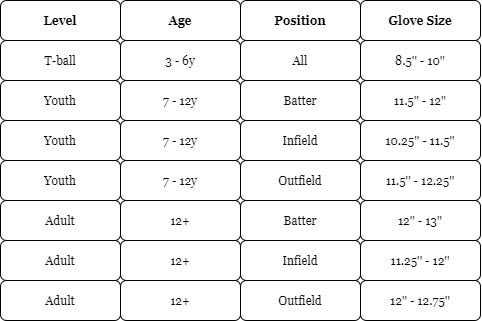
Parts of Baseball Gloves for a Child
Basically, a baseball glove has four parts- fingers, palm, webbing, and heel. Fingers are well-known to all for their simple look or first look. Similarly, the palm is the wider part of the glove. The heel is the lower part of the glove to fasten the ties. Webbing helps to catch the ball well.
In baseball, a handling glove is one of the most significant instruments you’ll have to turn into a good player. From numerous points of view, it’s the last piece to that breathtaking jumping get in the outfield or what you have to stop that line drive down the third benchmark. Not all mitts and softball gloves are made equivalent as far as size and material. What size glove you should utilize to a great extent relies upon the position you play, yet there are likewise different variables that help decide precisely which glove you ought to outfit yourself with.
Fingers in the Glove/Mitt
It is necessary to find out the correct size of fingers for a child. Usually, we consider ages from 3-6 as a child, 6 plus to 10 as a kid. Both baseball and softball players use gloves and they all have different fingers even of the same age. You can find available gloves with the required sizes for a child.
Webbing Categories in Baseball Gloves
It looks like web hence called webbing. Basically, it is a flat area near thumb with forefinger to keep the ball safe within palms. Balls never slip from it. Keepers can easily catch and hold the ball. Moreover, webbing is made of pure leather, so the surface of the ball adheres to it feasibly. Mostly they are of many sizes and designs to make some variations in the gameplay. The most common categories of webbing are- closed web, H-web, Trapeze web, 2-piece closed web, I-web, and modified trapeze web.
Palm Provisions in a Glove
A pentagonal or triangular shape area that is designed to resist the speedy force of the ball. Fingers and webbing help to protect the ball slipping, however, palms help to grab the ball statutorily. The diameter of the ball is the same or smaller than palms. Furthermore, it helps extra power for batters to grip the bat well. Sometimes it is called the ‘pocket’.
Heel Tactics of Baseball Gloves
Heels are the bottom end of the glove. It has stings and sticky fastening technology to close or cuff the glove with wrists. Furry sticky grabber or fastening slips are attached to the heel. It mostly helps to keep the glove tighter in the fist. Also, it protects from slipping from wrists.
Position-wise Baseball Gloves for a Child
According to the baseball player’s position, gloves may vary. In the baseball game, you know there are different types of players- hitter or batter, pitcher or bowler, fielder, keeper, and catcher. Batter, keeper, and pitcher are allowed to use gloves. Both batter and keeper use gloves in both hands. However, a bowler can use the glove in a single hand he/she doesn’t use to pitch.
Batters Gloves for Newbie Child
Well, batters are known as first batsmen in the baseball game. Batters can be of two categories- hard hitters and contact hitters. Both need gloves as well. Usually, a batter’s gloves are stronger than the standard ones. As they need to hit hard or just don’t want to slip the bat, they need an attached material between bat handle and gloves. Moreover, fingers never flop back by these gloves. A little deeper pocket size and closed webbing gloves are perfect for any batsman. Mizuno, Wilson, Slugger manufacturers make batter gloves for a long time. You can grab one from them. Even customized gloves can be provided by these prominent builders. The size varies from 11.5″ – 13″.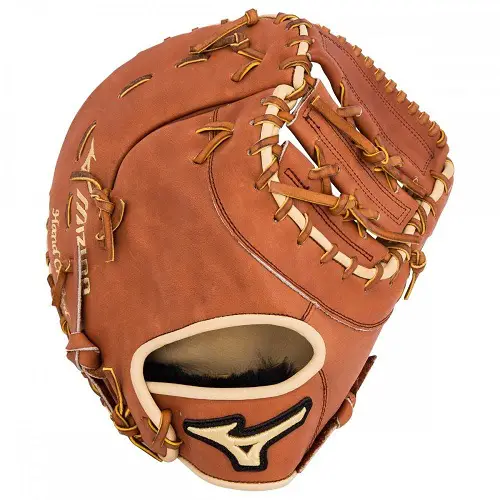
Catchers Gloves for a Regular Player
Mostly familiar as mitts. Players like to call these gloves ‘mitts’. Catchers are spread all over the field during gameplay. They are known as keepers also. Obviously, their gloves have to be bigger because of ball size and speed. A pitcher pitches ball towards a catcher directly to miss the batter. For safety issues, these gloves are 29.5″ – 34.5″.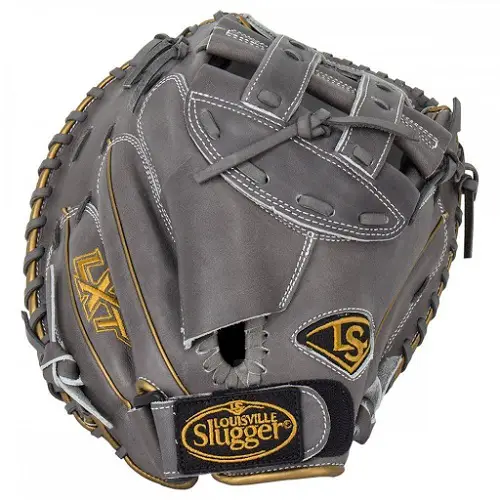
Stiffer Pitchers Gloves
Well, these are larger enough compared to other gloves. Pitchers wear these in one hand and pitch balls from the other. These gloves are larger but lighter and not so much designed because a pitcher doesn’t need to be worried about catching or hit by. A pitcher’s gloves are high-end gloves from the renowned companies Wilson and Louisville Slugger.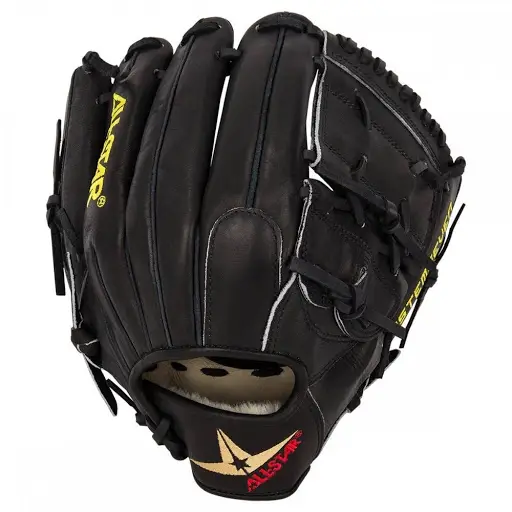
In-field Gloves for Long Usage
These tiny gloves are made to take into account fast plays like a twofold play in the center infield. They are shorter and have a shallower pocket than different gloves. Infielders regularly need an open pocket that makes it simple to get the show on the road out rapidly. The standard size for a baseball infield glove is 11.25 to 12 inches and 11.5 to 12.5 crawls for softball.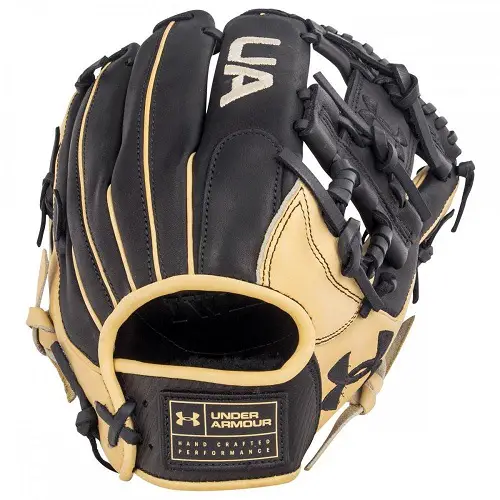
Diverse Outfield Gloves
These gloves are larger and specifically made for diving catches and fly balls. Larger construction of this glove keeps an outfield member cozy and flexible enough to pick any catches. Sometimes these gloves aren’t that necessary but for softball players and children, it is suggested to use. It has a deep pocket with 9″ – 15″ length.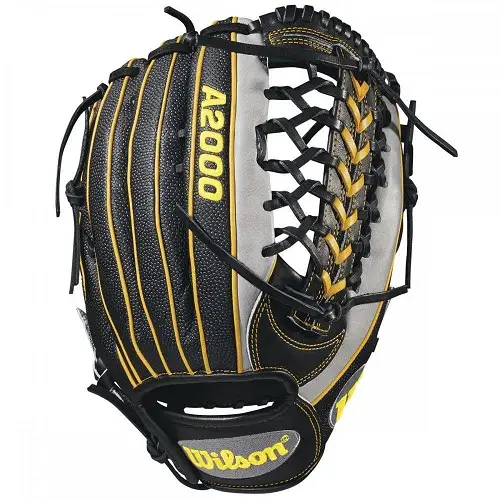
The material of Baseball Gloves for a child
Mostly pure leathers are used to manufacture baseball gloves because leather can grab a ball excellent. Furthermore, it adheres to the ball quite comfortably. Usually, baseball glove materials are made of three major categories- synthetic leather, oil-treated leather, and premium pro leather.
Synthetic Leather-made Gloves
When a child starts playing baseball, his/her first choice should be synthetic leather gloves. Because it is lightweight and stiffer. More precisely, a child feels much safe with these on. At the point when a player is first acquainted with the game through T-Ball or mentor pitch, the best decision is a synthetic glove. This style is contained man-made materials or a blend of man-made and cowhide. 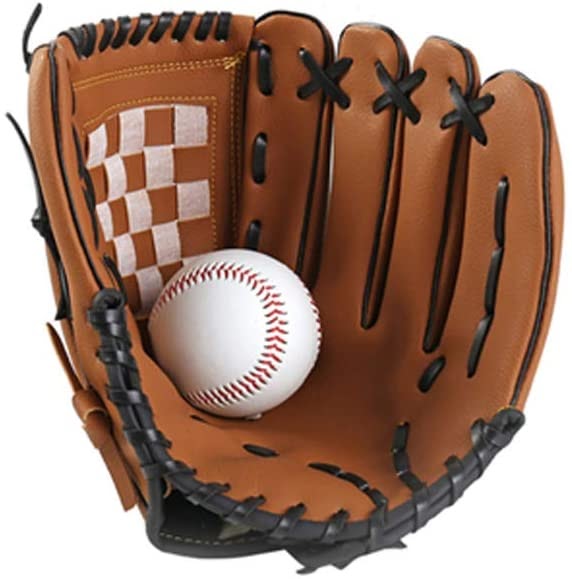
These gloves are made of a gentler material, making it simpler to close, which enables players as they gain proficiency with the ideas of getting, tossing and handling. You additionally won’t need to experience breaking in period with these gloves. Synthetic gloves are on the lower end of the value scale, so if a player becomes out of it, it very well may be moderate to supplant.
Oil-treated Leather Gloves
Well, it sounds like some oil on the gloves. Actually, not like that; rather it seems to be oily as its outlook. The most important feature of these gloves is softness. As your kid keeps on playing the game, you’ll need to move up to a leather glove. Oil-treated gloves are normally utilized for players age 12 through secondary school. These are more costly than synthetic yet will be an incredible worth. 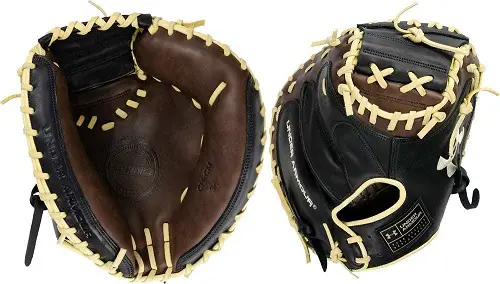
These gloves will, in general, be made of soft leather, so they are anything but difficult to close. The general quality is a lot higher than a synthetic glove — it’s an observable contrast. Oil-treated mitts are additionally simple to break in as a result of the softy leather they’re made of.
Premium Pro Leather Gloves
These are the modified version of leather gloves. It has quality leather, 100% made of cowskin, softer pads included, comfortable, and best craftsmanship. At the highest point of baseball, the glove world is premium leather. These gloves are intended for genuine baseball players and are what you see at the professional level.

They are frequently made of full-grain leather or steer cover-up and offer an upgraded feel to help raise your game. Premium leather gloves additionally imply it will take more time to break-in. Premium cowhide gloves are a greater amount of a venture however will last after some time. They are the best quality out there.
The glove is seemingly the most significant bit of hardware a ballplayer will requirement for achievement in the game. Regardless of what age or expertise level, there’s a mitt that accommodates your kid’s playing style.
Common Glove Related FAQ for a Child Baseball
How to care for a baseball glove?
So far it is mentioned several times here in this article. However, you can find some quick steps and techniques in the following. Take the necessary steps to follow these unless you didn’t do it ever.
Routine Maintenance:
It is done regularly for 20 minutes at least. Easier to do this anytime at home. Just take the set of gloves and gently brush the dust, check laces and stings, elasticity and stiffness.
Cleaning:
If any spots on the glove or unavoidable unerasable filths, use glove oil on it. Take some oil on a neat piece of cloth, then rub the affected areas on the mitts. Glove oil is specially made for gloves because of leather bodysuits. So, it is totally safe strategy to clean dark spots.
Storing:
Diverse baseball players all over the US in different regions. Weather isn’t that similar there. Hence, you might face a rainy climate or snowy weather. So far we know, leathers are sensitive to water, moisture, snow or any sort of dewy facts. If you store them in such an environment, the stiffness must be inferior. Store the gloves in a dust-free and dry place that keeps these not sloppy.
Protect Inside:
Check the inside of the glove on a regular basis. Child safety first, so check whether it hurts the hand or any insects inside that bites. Even I faced this problem personally while I was a child. A toxic hornet took place into my mitts and that bit my forefinger. Really that was concerning.
Reshaping:
Reshaping means shorten or prolonging the gloves. Gloves have stitches and laces. You can adjust those for the convenience of the child. Usually, kid’s hands are soft and weak. Too much pressure causes the bad shape of fingers or wrists. Ask your child if he/she feels cozy or not. Then reshape the glove accordingly.
How can I keep my baseball glove last longer?
Several steps should be followed to keep your baseball glove’s longevity. Expert coaches and players faced this many times and they suggested us to take the upcoming actions-
- Tighten the laces: Laces get loosen after massive usage. As your child grows up, hands and palms will grow eventually. So, there’s a lot of chances about the lace to get loosen or rigid. Moreover, moist weather and snowfalls make the laces weak.
- Oil the gloves: Make the gloves shiny by using Lexol oil, regularly. This oil is made for baseball gloves and mitts, especially. Put some oil onto your palms, rub together and gently hone the glove leather. It is more recommended not to use soap-water or detergent or any chemical solutions.
- Cleaning and Caring: Mitts are water-resistive. You can use a soft brush to remove the dust on it. Use glove oil only, not other oils like lubricants or peanut oil. Caring is another vital issue to keep the glove’s longevity. Basically, caring depends on the proper usage of the child’s hands. Make sure the glove doesn’t get suppressed or enough pressure on it. Both cause severe malfunctioning on the mitts.
When should I replace my baseball gloves?
Good question. Being numerous usage, anything gets rusty, faulty, less stiff, and malfunctioning. Likewise, a baseball glove can be less stiff and clumsy. How to figure it out, right? Well, when your kid complains against the glove that it is not working properly or ball slips from it or the leather pinches inside the hand; it is time to change/replace the glove as soon as possible. Weak leather, broken laces or stings can cause harm to your child’s hand. For a batter, both gloves should be replaced. For a pitcher, you can alter fielder gloves sometimes. Keeper mitts are important and unique, so when facing any problem replace it soon.
Bottom Line of “How to Fit a Baseball Glove for a Child”
Baseball is a famous game in the US and very few people are unknown to the rules. Even lots of junior and young leagues are available all over the country. Every part and accessory related to this game is available to the marketplaces. Before buying mitts or gloves for a child, you should go through the details here. How to clean the mitts or how to caring, materials, sizing charts are well-decorated here. How to fit a baseball glove for a child is somehow relevant issues of the game. Any queries on it, feel free to ask anytime. Furthermore, lots of tutorials, reviews, buying guides, tips, and tricks in our guiding section. We hope you can find anything that matches your requirements.
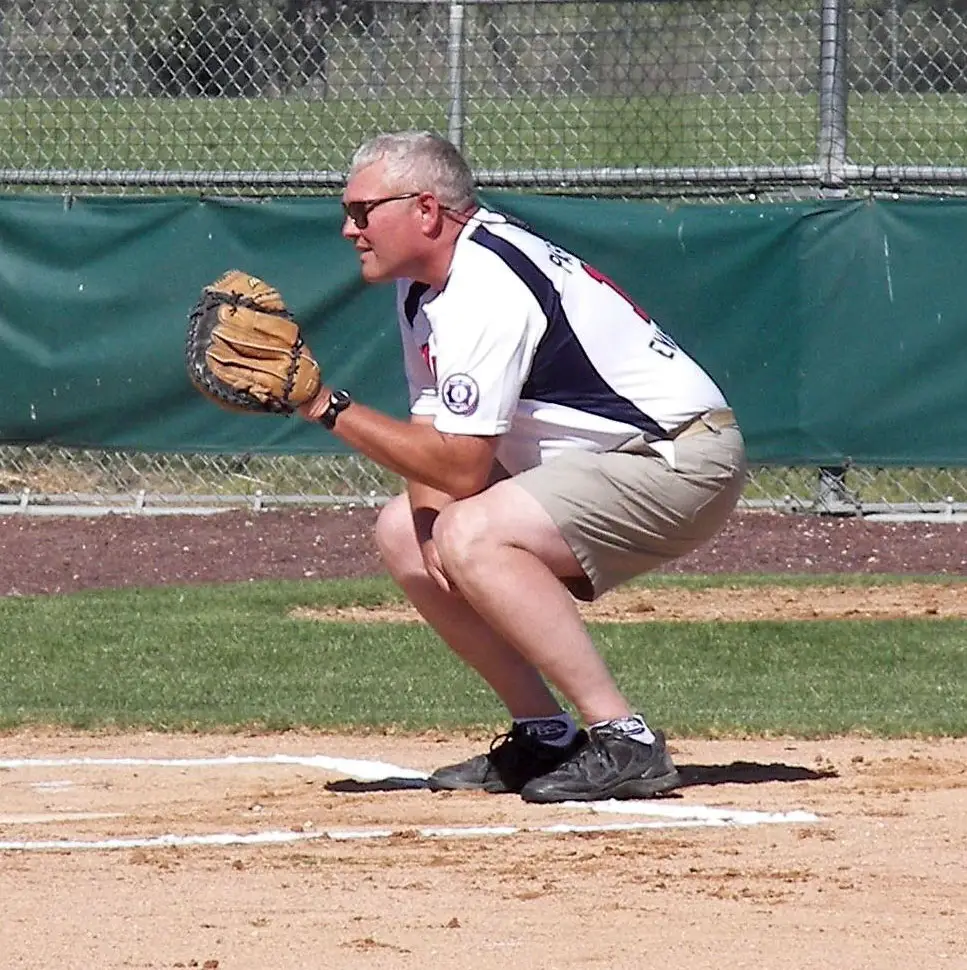
My name is David Farnum and I’ve been a Little League Coach in my community for the past 7 years. With 2 boys playing baseball and 1 girl playing softball, most weekends I can be found near a baseball diamond.